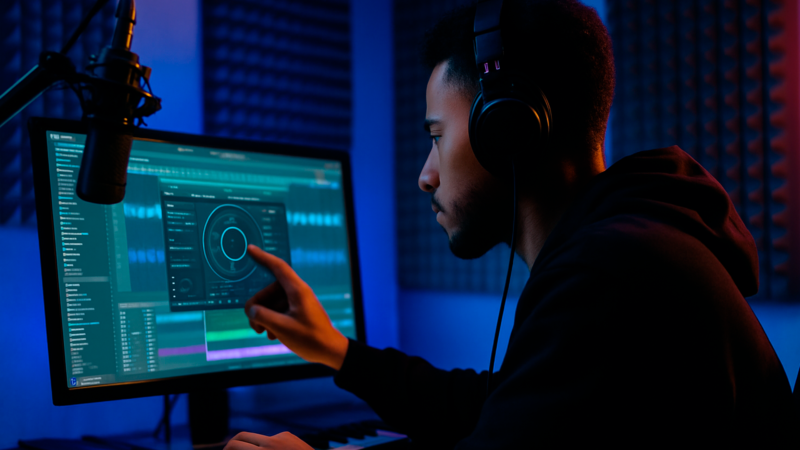
Email Marketing for Musicians: How to Promote Your Music
Learn how to use email marketing as a musician to grow your fanbase, promote your music, and build real connections
Autotune is one of the most powerful tools in modern music.
From Travis Scott to T-Pain to Brent Faiyaz — it’s everywhere.
But if you’re recording at home, it’s easy to go too far… or not far enough.
This guide is for independent artists who want to use the right way — whether you’re just experimenting or trying to sound radio-ready.
We’ll cover:
Let’s level up your vocal sound — without sounding like a robot (unless that’s your thing).

Autotune is a pitch correction tool.
It listens to your vocal and shifts off-key notes to the nearest correct note — based on the key and scale you choose.
But it’s not just a fixer.
It’s also a stylistic effect that can completely change the feel of your voice — from natural and warm to robotic and futuristic.
There are two main ways artists use autotune:
Used subtly to fix imperfections and tighten pitch.
Think: J. Cole, Alicia Keys — vocals still sound real, just clean.
Used with extreme settings to create that iconic autotune “glide” or robotic texture.
Think: Travis Scott, Lil Uzi Vert, Don Toliver.
Your use of autotune depends on your genre, vocal style, and the vibe you want to give.
No matter what plugin you use, there are a few basic controls you’ll always see:
Always set the autotune plugin to match the key of your instrumental.
If you’re unsure, use a tool like Tunebat or Keyfinder to find it.
Wrong key = weird, off-sounding correction.
This controls how fast your vocal gets corrected.
Most trap, melodic rap, and R&B use fast settings to get that gliding feel.
These settings keep some of your voice’s natural character.
If you want a more organic tone, turn these up.
If you want that cyber-smooth glide, turn them down.
You don’t need Antares Auto-Tune Pro to get started.
Here are some solid plugins for beginners and budget artists:
Simple and clean. Great for basic pitch correction.
Download GSnap
Includes formant shifting and stereo width options.
Download MAutoPitch
Amazing real-time pitch correction for live-style vocals.
Download Graillon 2
If you want the real deal without spending $400+, this is a great lite version.
Explore Autotune Access
Even pro artists make these — here’s how to dodge them:
Your vocal won’t sound “cool distorted.”
It’ll just sound broken. Always set the correct key.
Too fast and too dry can make your vocal sound lifeless or like a parody.
Autotune isn’t magic. It doesn’t replace a good take.
If your tone, timing, or energy is off — fix that first.
Don’t slap autotune + pitch correction + pitch shifting all at once.
Keep it clean.
Autotune sounds best inside a vocal chain — not by itself.
Here’s a simple chain for melodic vocals:
Whether you’re aiming for Travis Scott-level effects or just want cleaner notes, autotune is your friend — if you know how to use it right.
Use it to enhance your voice, not replace it.
Your tone, emotion, and writing still matter more than any plugin.
If you’re recording at home and want pro-quality autotuned vocals, check out my Mix & Master Service
I’ll help you get that industry sound — without needing an expensive studio.

Learn how to use email marketing as a musician to grow your fanbase, promote your music, and build real connections

Learn how to use autotune the right way with practical tips for artists. Discover how to get a pro sound at home and avoid common mistakes.

Create a visual identity as an independent artist. Learn key artist branding strategies to stand out, connect with fans, and grow your career

Discover how email marketing helps musicians grow streams and connect with fans directly — even with a small list.